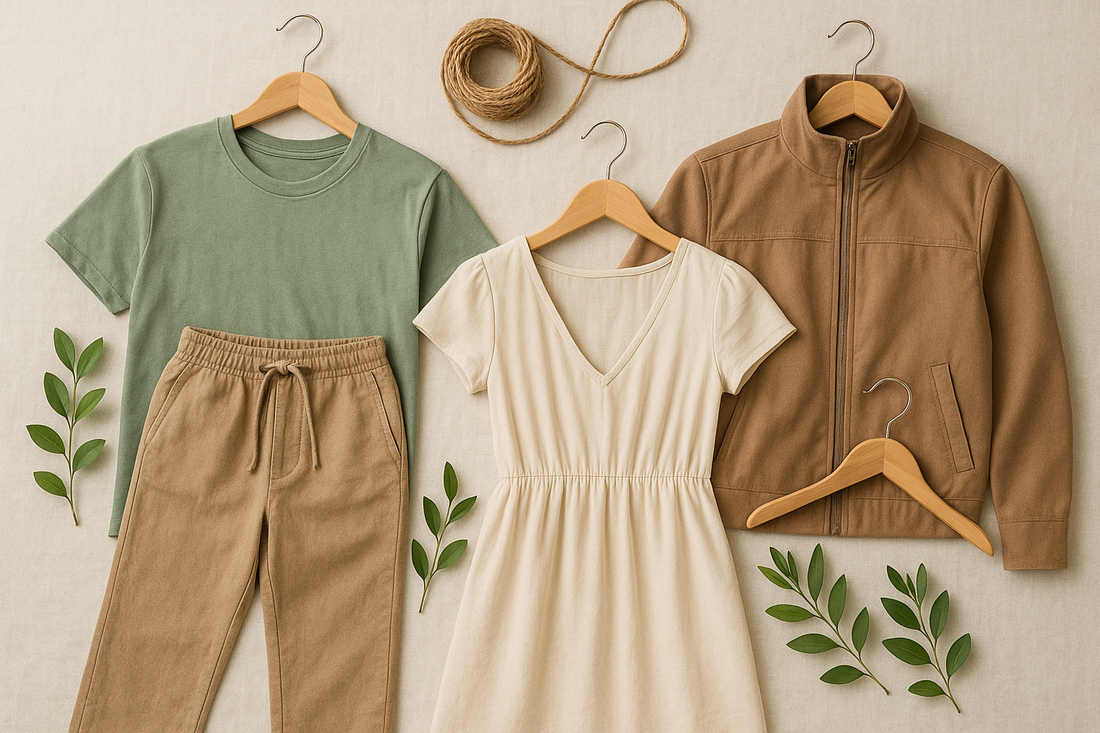
Why Eco-Friendly Clothing Matters — Making Your Wardrobe Work for the Planet
Share
Fashion has never been just about looks. Our clothing choices ripple outwards — affecting our environment, communities, health, and the future. With fast fashion’s strain on resources and waste streams growing, turning towards sustainable, eco-friendly clothing is more than trend: it’s necessity. Let’s explore the key stats, benefits, and how you can shop smarter.
Eyes on the Facts: The Environmental & Social Cost
-
The fashion industry accounts for 10 % of global carbon emissions, more than both international flights and maritime shipping combined. Miik+2genevaenvironmentnetwork.org+2
-
Global fibre production has nearly doubled in about twenty years: from 58 million tonnes in 2000 to 116 million tonnes in 2022. If things continue business-as-usual, it's expected to reach ~147 million tonnes by 2030. genevaenvironmentnetwork.org
-
Water use is massive. The textile value chain consumes 215 trillion litres of water per year — that’s the equivalent of about 86 million Olympic-sized swimming pools. genevaenvironmentnetwork.org
-
Waste is huge: roughly 85 % of all textiles produced are discarded annually. genevaenvironmentnetwork.org
-
Consumer attitudes are changing: in surveys, a sizable share of younger shoppers (Gen Z especially) prefer sustainable brands, even willing to pay more for them. Emeritus Online Courses+1
What “Eco-Friendly Clothing” Means in Practice
Here are what many sustainable/ethical brands strive for:
-
Materials: organic cotton, hemp, bamboo, recycled fibers, deadstock fabric. Natural dyes, lower chemical inputs.
-
Production: fair labor, safe working conditions, reduced water usage, local manufacturing to cut shipping emissions.
-
Design & Lifecycle: making clothes that last (durability), encouraging repair, reuse, recycling; reducing “fast fashion” turnover.
-
Circularity: clothes that can be repurposed, recycled or composted; minimal packaging.
Why It’s Worth It — Benefits to You & the World
-
Environmental impact: lower greenhouse gas emissions, less water waste, reduced chemical runoff.
-
Improved health: fewer toxic dyes and chemicals near your skin; more breathable/natural materials.
-
Durability & value: sustainable clothes often cost more upfront but can last much longer, saving money and waste in the long run.
-
Ethical/ social justice: better conditions & pay for workers; less exploitation.
-
Conscious consumer power: as demand for sustainable fashion rises, it pushes brands and policy in a greener direction.
Challenges to Watch Out For
-
Greenwashing: some brands may exaggerate or misstate “sustainability.” Certifications & transparency help.
-
Cost: sustainable pieces often cost more, which can limit accessibility.
-
Scale & supply chain issues: organic / recycled materials aren’t always available in large quantities, parts of the supply chain may still have environmental or labor issues.
How You Can Make Smarter Choices
-
Go for natural or recycled fabrics.
-
Choose quality over quantity — invest in pieces that will last.
-
Support ethical brands (look for fair trade, certifications like GOTS, etc.).
-
Shop secondhand, swap, repair.
-
Wash clothes carefully — cold water, less often, gentle detergents.
Stylish Eco-Friendly Clothes You’ll Love
Here are some sustainable clothing pieces you can shop now. Each product follows good eco-materials or ethical practices.
Every time we choose to buy sustainably, even just one item, we send a message. We reduce demand for harmful practices, support better labor conditions, and help protect ecosystems. Over time, small shifts in what we wear add up.
If you’re building a more eco-friendly wardrobe, don’t feel pressured to overhaul everything at once. Start with a few high-impact pieces, buy better, buy less, and care well for what you have.
